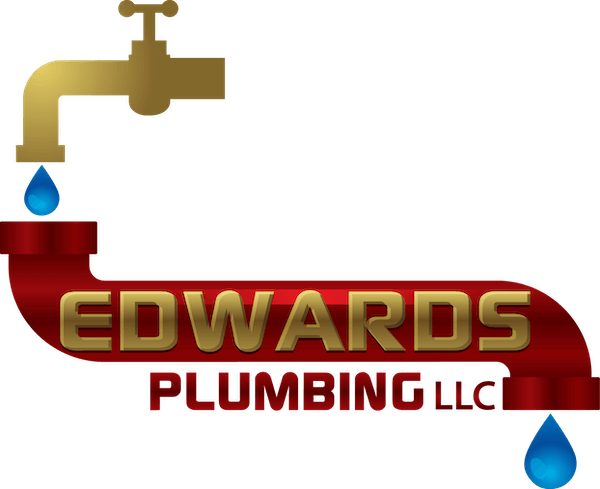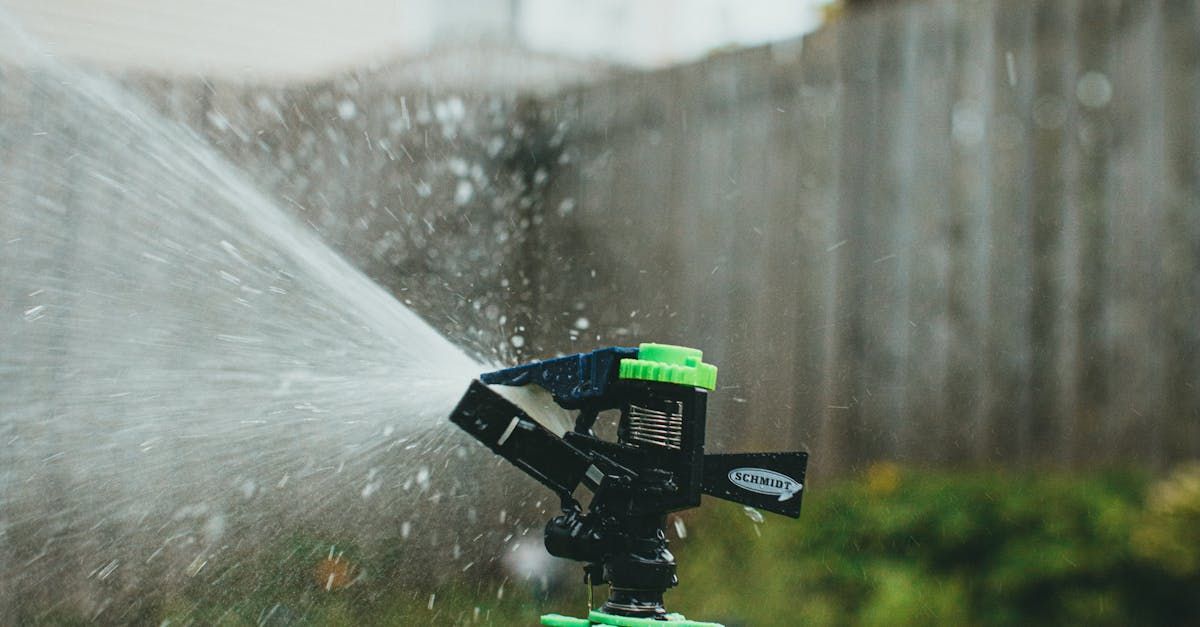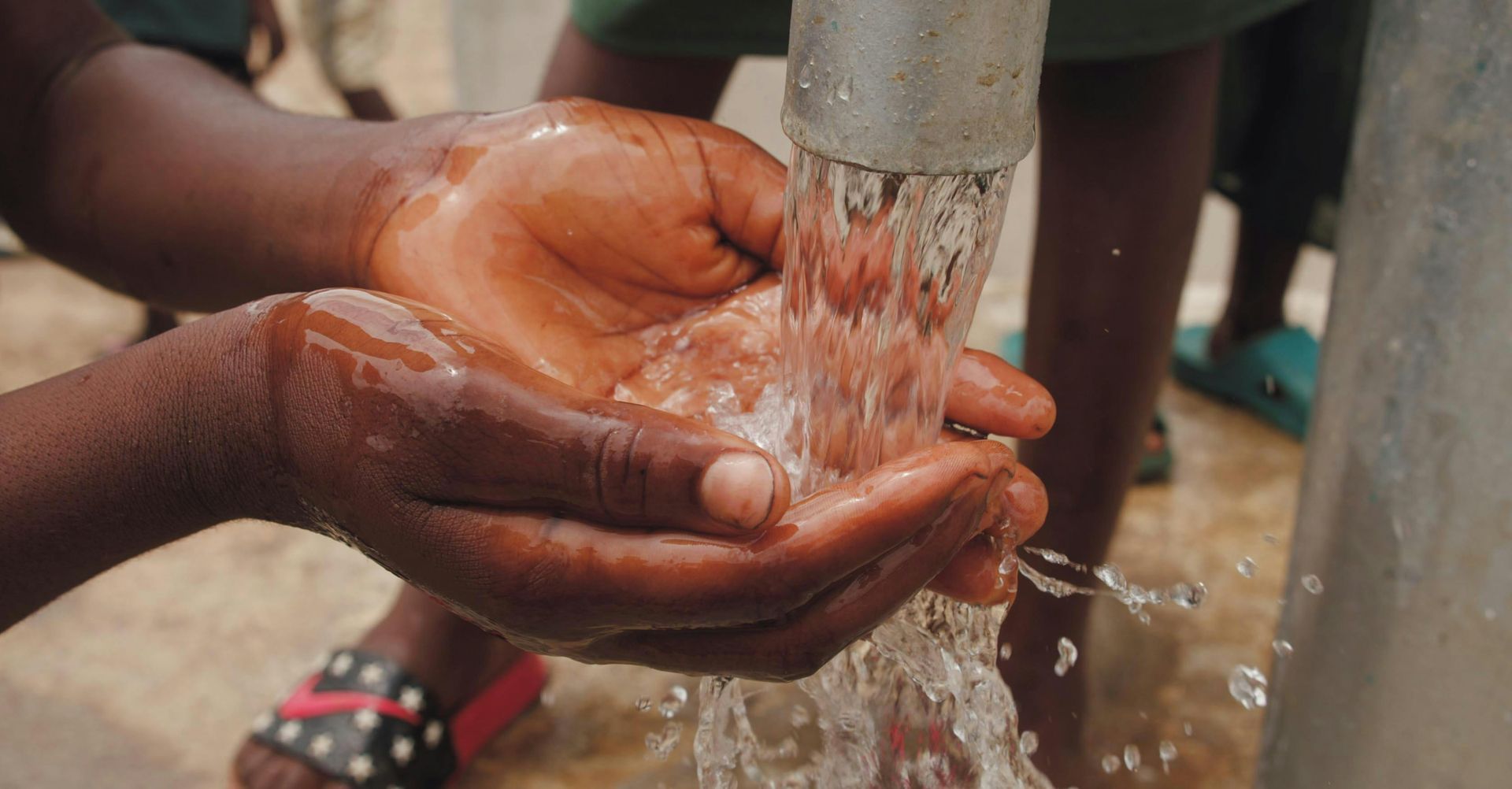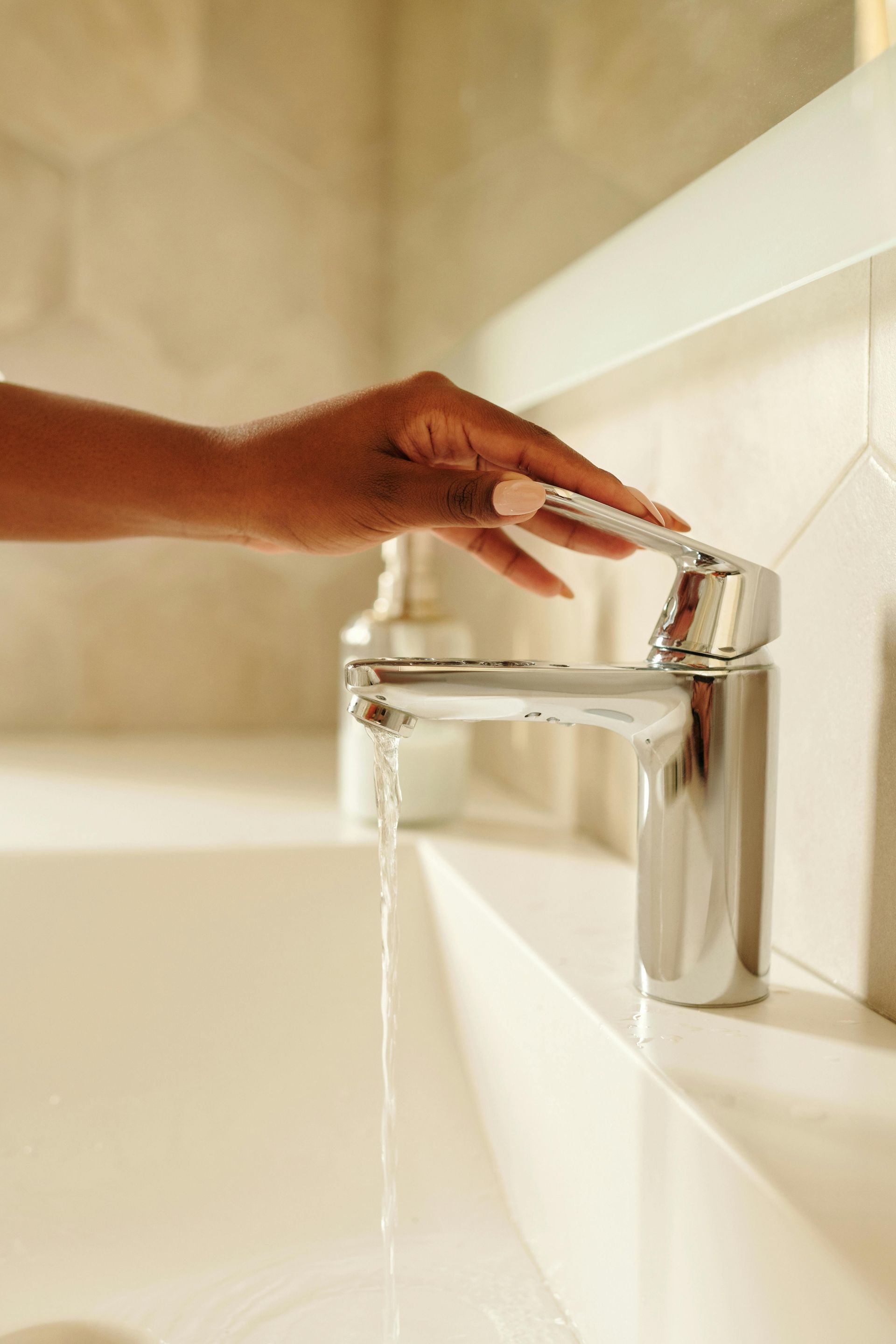Installing a sprinkler system can be a complex task. It requires careful planning, knowledge of plumbing techniques, and an understanding of your garden's specific needs.
This article provides
expert plumbing advice and
sprinkler system installation tips. It aims to guide homeowners and DIY enthusiasts through the process.
From understanding local water regulations to seasonal maintenance, we cover it all. Whether you're a beginner or an intermediate handyman, this guide will be of great help.
Let's dive into the world of
outdoor plumbing and
irrigation system setup.
Understanding Local Water Regulations
Before you start digging, it's crucial to understand your local water regulations. These rules can vary widely from one region to another.
Some areas may require permits for sprinkler system installation. Others might have specific guidelines about water usage or restrictions on certain types of
sprinkler heads. Always check with your local authorities to ensure your project complies with all regulations.
Planning Your Sprinkler System Layout
A well-planned layout is key to a successful sprinkler system installation. Start by sketching your yard, marking out areas of different water needs. This will help you design efficient irrigation zones.
Consider factors like sun exposure, slope, and type of vegetation. These will influence the placement and type of sprinkler heads. Also, remember to mark the location of your water source on the sketch.
Here are some key points to consider when planning your layout:
- Identify high and low areas in your yard
- Mark out areas of different water needs
- Consider sun exposure and type of vegetation
- Locate your water source
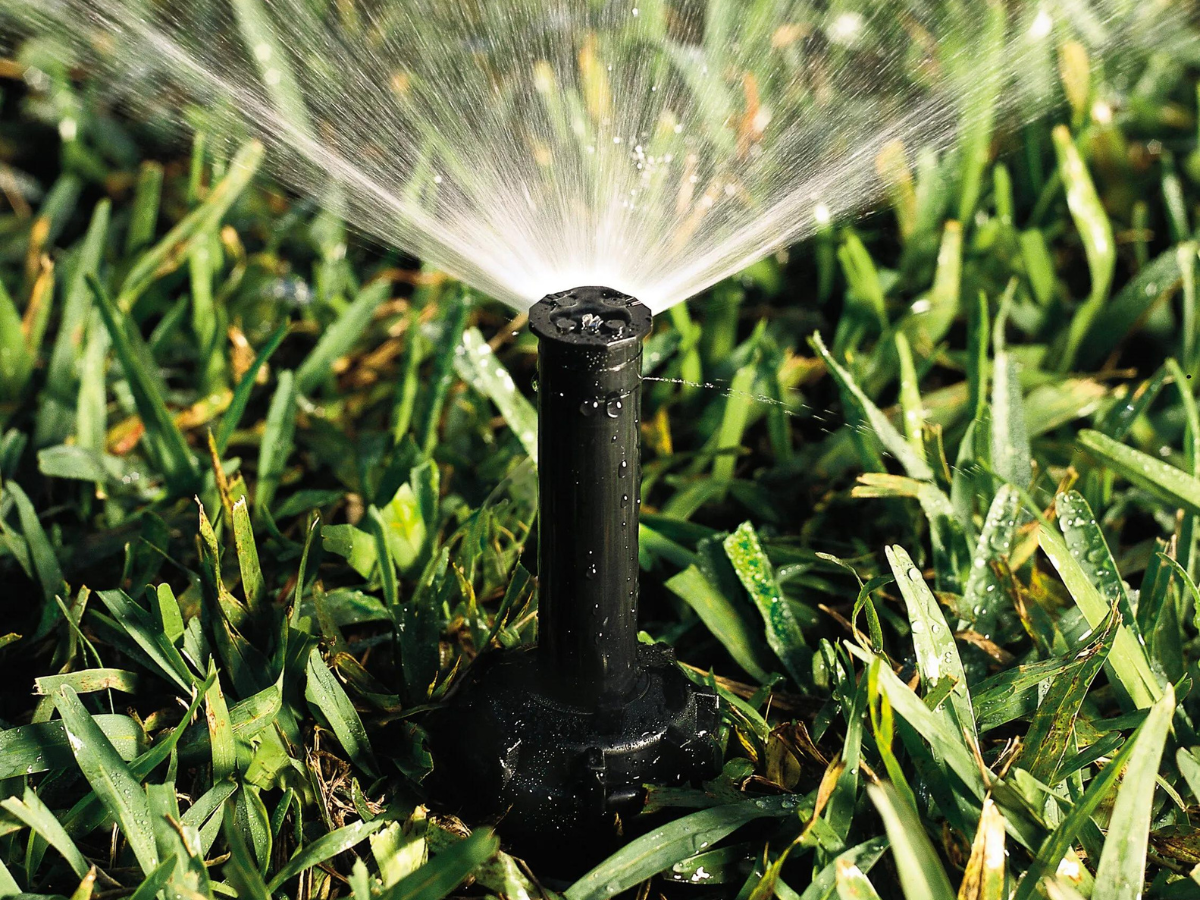
Photo By:
This Old House
Choosing the Right Sprinkler Heads
Choosing the right sprinkler heads is crucial for efficient watering. Different types of heads serve different purposes. For instance, pop-up spray heads are great for small to medium lawns, while rotor heads work best for larger areas.
Consider the type of vegetation and the size of the area when choosing sprinkler heads. Also, remember that different areas of your yard may require different types of heads. It's all about ensuring even water distribution and avoiding water waste.
Water Pressure and Flow Rate Considerations
Understanding your home's water pressure and flow rate is key to a successful sprinkler system installation. These factors determine how many sprinkler heads you can run at once. Too many heads in a single zone can lead to low water pressure and poor coverage.
You can measure your home's water pressure with a pressure gauge. For flow rate, you can use a simple bucket test. These measurements will guide your
sprinkler system design and ensure optimal performance.
Trenching Techniques for Piping
Trenching is a crucial part of sprinkler system installation. It involves digging trenches to lay down the pipes that will carry water to the sprinkler heads. Proper trenching ensures the system's durability and efficiency.
There are several techniques for trenching. You can use a trenching shovel, a vibratory plow, or a
trenching machine. The choice depends on the size of your project and the type of soil in your yard.
Here are some tips for effective trenching:
- Dig trenches about 6-12 inches deep to protect the pipes from damage.
- Keep the bottom of the trenches level to ensure even water distribution.
- Backfill the trenches carefully to avoid damaging the pipes.
Connecting to the Main Water Supply
Connecting your sprinkler system to the main water supply is a critical step. It's important to do this correctly to prevent leaks and ensure a steady water flow to your sprinklers.
First, shut off the main water supply. Then, install a tee fitting into the main water line. Connect your sprinkler system to this tee fitting. Make sure all connections are tight and secure to prevent leaks.
Installing Valve Manifolds and Backflow Preventers
Valve manifolds control the flow of water to different zones of your sprinkler system. They should be installed in an accessible location, preferably in a valve box for protection.
Backflow preventers are crucial for keeping your water supply safe. They prevent water from your sprinkler system from flowing back into your home's water supply. Install them according to local codes and regulations.
Sprinkler System Controllers and Timers
Sprinkler system controllers and timers automate the watering process. They can be set to water your lawn at specific times, ensuring optimal watering without wastage.
Modern
controllers come with smart features. They can adjust watering schedules based on weather forecasts, saving water and keeping your lawn healthy. Choose a controller that suits your needs and budget.
Assembling and Installing Sprinkler Heads
Assembling and installing sprinkler heads is a crucial step. It determines the effectiveness of your irrigation system.
Start by attaching the sprinkler heads to the risers. Ensure they are at the correct height and angle for optimal coverage.
Here are some steps to follow:
- Screw the sprinkler head onto the riser.
- Adjust the sprinkler head to the desired angle.
- Test the sprinkler head to ensure it covers the intended area.
Testing and Adjusting Your Sprinkler System
Once your sprinkler system is installed, it's time to test it. Turn on the water and observe the coverage of each sprinkler head.
If you notice any dry spots or areas of overwatering, adjust the sprinkler heads accordingly. This ensures even water distribution across your lawn or garden.
Seasonal Sprinkler System Maintenance
Maintaining your sprinkler system is crucial for its longevity and performance. Regular inspections can help identify and fix issues before they escalate.
Here are some seasonal maintenance tips:
- Spring: Check for leaks or damage caused by winter freezing. Test the system and adjust sprinkler heads as needed.
- Summer: Monitor your system for efficient water use. Adjust the watering schedule based on weather conditions.
- Fall: Prepare your system for winter. This may include draining water from the pipes to prevent freezing.
Remember, a well-maintained sprinkler system can save you time, money, and water in the long run.
When to Call a Professional
While DIY installation can be cost-effective, some situations call for professional help. Complex systems, large areas, or specific local regulations may require expert assistance.
Remember, a poorly installed sprinkler system can lead to water waste, damaged landscapes, and costly repairs. If in doubt, it's always best to consult with a professional.
Conclusion
Completing a successful sprinkler system installation requires expertise and precision. At Edwards Plumbing, we specialize in a full range of plumbing services, including installation, repair, and replacement. Our team of experts is dedicated to providing top-notch plumbing solutions tailored to meet your specific needs.
Choose Edwards Plumbing for all your plumbing requirements, from bathroom and kitchen plumbing remodeling to drain cleaning and declogging services. Our commitment to quality and customer satisfaction sets us apart as your trusted partner for all plumbing needs.
Contact us
today and experience the difference with Edwards Plumbing.
Share this blog!
